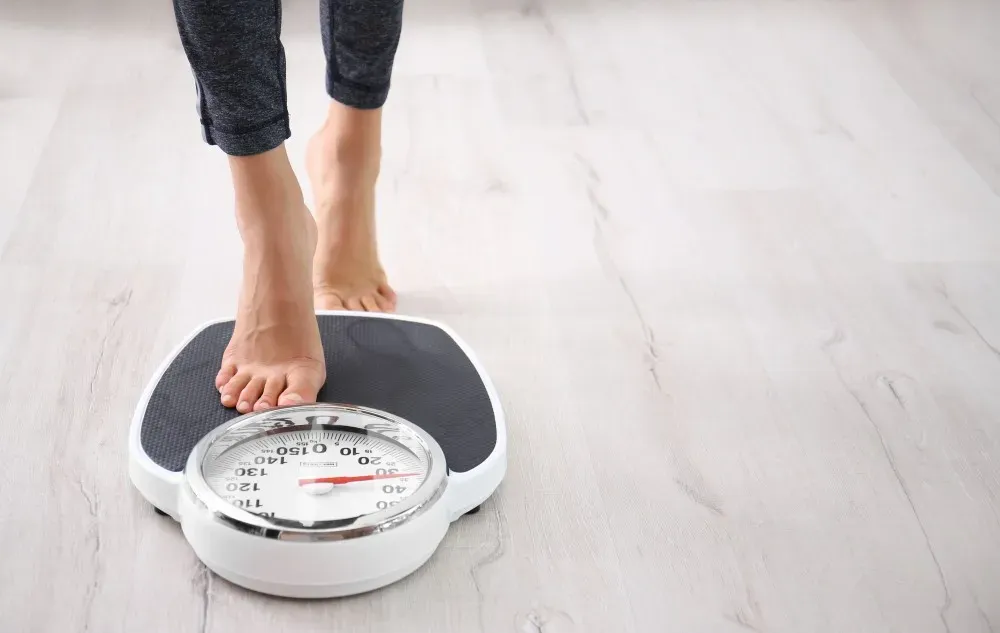Introduction
When it comes to weight loss, there are countless diets and workout programs promising quick results. Yet, behind all of the fads and hype, one principle stands as the foundation of fat loss: the calorie deficit. Understanding how it works and how to apply it in your daily life can transform not just your body, but your relationship with food and fitness.
In this in-depth guide, we’ll explore:
- What a calorie deficit is
- The science behind it
- How to calculate your own calorie needs
- Practical strategies to maintain a deficit
- Common mistakes people make
- How to ensure weight loss is sustainable
By the end, you’ll know exactly how to approach a calorie deficit without starving yourself or burning out.
What is a Calorie Deficit?
A calorie deficit occurs when you consume fewer calories than your body burns. Calories are units of energy, and your body requires them to perform all activities—from breathing and digestion to exercise and daily movement.
When you consistently eat fewer calories than you expend, your body uses stored fat as energy, resulting in fat loss.
Key Concept: Energy Balance
- Calories In = food and drink you consume.
- Calories Out = calories burned through:
- Basal Metabolic Rate (BMR) – energy needed at rest
- Thermic Effect of Food (TEF) – energy used to digest food
- Physical Activity – workouts, daily steps, chores
- Non-Exercise Activity Thermogenesis (NEAT) – fidgeting, walking, standing
A calorie deficit means your Calories In < Calories Out.

Why Calorie Deficit is Essential for Weight Loss
No matter what diet you follow—low-carb, keto, paleo, intermittent fasting—weight loss only happens because of a calorie deficit.
- Keto works because you reduce appetite and often eat fewer calories.
- Intermittent fasting works because you shorten eating windows, leading to fewer calories consumed.
- Low-fat diets work because fat has more calories per gram (9) than carbs or protein (4), so reducing fat can cut calories.
In short: the method doesn’t matter as much as the calorie deficit.
How to Calculate Your Calorie Deficit
Step 1: Find Your Maintenance Calories
Maintenance calories = the number of calories you need to stay at your current weight.
You can estimate this using the Mifflin-St Jeor Equation:
Men:
BMR = (10 × weight in kg) + (6.25 × height in cm) – (5 × age in years) + 5
Women:
BMR = (10 × weight in kg) + (6.25 × height in cm) – (5 × age in years) – 161
Then, multiply BMR by your activity factor:
- Sedentary (little exercise): ×1.2
- Lightly active (light exercise/sports 1-3 days/week): ×1.375
- Moderately active (3-5 days/week): ×1.55
- Very active (6-7 days/week): ×1.725
Step 2: Choose Your Deficit
A safe and sustainable calorie deficit is 300–700 calories/day.
- 500-calorie deficit = about 1 lb (0.45 kg) fat loss per week.
- More than 1000 calories/day deficit = may lead to muscle loss, fatigue, and slower metabolism.
Step 3: Track Your Progress
- Use an app (MyFitnessPal, Cronometer, LoseIt).
- Monitor weight weekly (not daily—water weight fluctuates).
- Track body measurements and progress photos.
Practical Tips to Maintain a Calorie Deficit
1. Focus on High-Protein Foods
Protein is the most satiating macronutrient. It keeps you fuller longer and helps preserve lean muscle mass.
Examples: chicken breast, Greek yogurt, tofu, beans, fish.
2. Eat More Fiber
Vegetables, fruits, legumes, and whole grains add bulk to meals without adding many calories. Fiber slows digestion and reduces hunger.
3. Use Volume Eating
Fill half your plate with low-calorie, high-volume foods like leafy greens, cucumbers, zucchini, mushrooms, and berries.
4. Choose Smart Snacks
Swap chips and cookies for air-popped popcorn, rice cakes with hummus, or apple slices with peanut butter (in moderation).
5. Hydrate Properly
Thirst is often mistaken for hunger. Drinking water before meals can naturally reduce calorie intake.
6. Plan Your Meals
Meal prepping prevents impulsive choices. If healthy meals are ready, you’re less likely to order fast food.
7. Prioritize Sleep
Lack of sleep increases hunger hormones (ghrelin) and reduces fullness hormones (leptin), making deficits harder to maintain.

Common Mistakes in a Calorie Deficit
- Cutting Calories Too Low
Extreme deficits cause muscle loss, fatigue, and binge eating. - Ignoring Protein
Without protein, weight lost may be muscle, not just fat. - Overestimating Exercise
Workouts burn fewer calories than people think—don’t “eat back” all your exercise calories. - Not Accounting for Liquid Calories
Soda, alcohol, lattes, and juices add calories without filling you up. - Being Inconsistent
One weekend of overeating can undo a week’s worth of deficit.
The Role of Exercise in a Calorie Deficit
While diet creates the deficit, exercise helps:
- Preserve muscle mass
- Boost metabolism
- Improve health markers
Best Types of Exercise:
- Strength training – protects lean body mass
- HIIT (High-Intensity Interval Training) – burns more calories in less time
- NEAT (Non-Exercise Activity Thermogenesis) – walking, standing, fidgeting
Psychological Aspects of a Calorie Deficit
- Mindful Eating: Pay attention to hunger cues, eat slowly, and avoid distractions.
- Flexibility: Allow yourself occasional treats—rigidity leads to bingeing.
- Long-Term Mindset: Think in months, not days. Fat loss is a marathon, not a sprint.
How Long Should You Stay in a Calorie Deficit?
- Short-term aggressive deficits = faster results, but harder to maintain.
- Moderate deficits = sustainable, easier on mental and physical health.
- Consider diet breaks every 8–12 weeks: return to maintenance for 1–2 weeks to reset metabolism and hormones.
Frequently Asked Questions
Can I lose weight without exercise?
Yes. Weight loss comes from a calorie deficit, which can be achieved with diet alone. But exercise improves health and body composition.
Do I need to count calories forever?
Not necessarily. Tracking is a tool to build awareness. Over time, you’ll learn portion sizes and can eat intuitively.
What’s better: low-carb or low-fat?
Neither is inherently superior. The best diet is one you can sustain long-term while staying in a calorie deficit.
Conclusion
A calorie deficit is the foundation of weight loss. By understanding your maintenance calories, creating a moderate deficit, eating nutrient-dense foods, and avoiding common pitfalls, you can achieve sustainable fat loss.
Remember: consistency beats perfection. Instead of chasing fad diets, focus on building habits that allow you to maintain a calorie deficit while still enjoying life.

